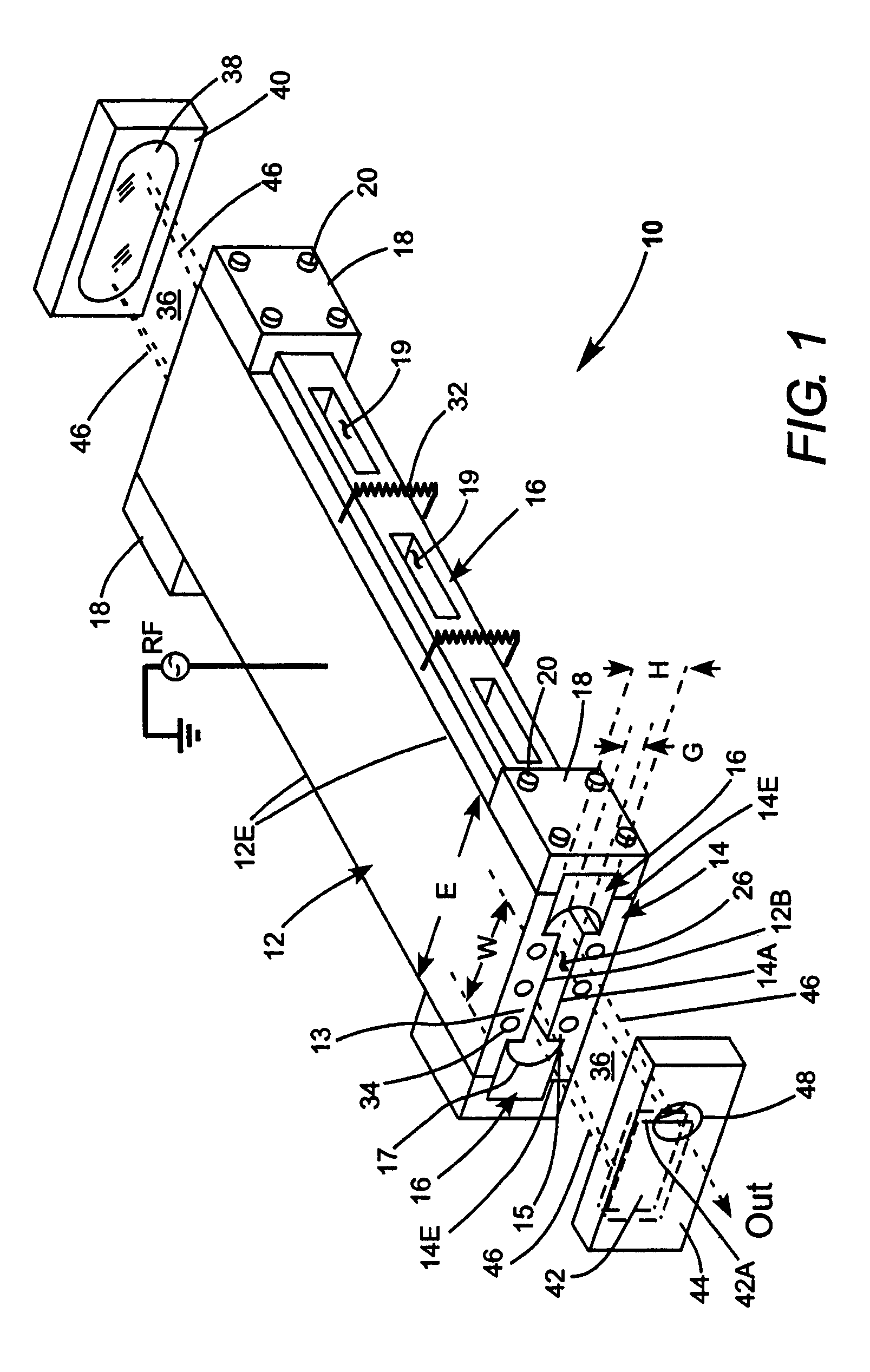Dielectric coupled CO2 slab laser
a co2 and laser technology, applied in the direction of laser details, laser cooling arrangements, active medium materials, etc., can solve the problems of reducing the resistance-capacitance (rc) time constant of the electrode impedance, reducing and increasing the resistance-capacitance (rc) time constant of the electrode impedance. , the effect of increasing the resistance-capacitance (rc) time constan
- Summary
- Abstract
- Description
- Claims
- Application Information
AI Technical Summary
Benefits of technology
Problems solved by technology
Method used
Image
Examples
Embodiment Construction
[0016]Turning now to the drawings, wherein like components are designated by like reference numerals, FIG. 1 schematically illustrates one preferred embodiment 10 of a CO2 slab laser in accordance with the present invention. Laser 10 includes upper and lower elongated slab electrodes 12 and 14, respectively, arranged spaced-apart and face-to-face. The electrodes have an overall width E. The electrodes are spaced apart by dielectric (ceramic) inserts or spacers 16 having a height H, and extending laterally, i.e., in the width direction of the electrodes, partway between the electrodes. Inserts 16 preferably also extend laterally beyond longitudinal edges respectively 12E and 14E of the electrodes by at least about 2.0 millimeters (mm). Most preferably, inserts 16 extend at least about 5.0 mm beyond the electrode edges. Inserts 16, here, further extend along the entire length of the electrodes. This lateral extension of ceramic inserts 16 increases the surface path length from electro...
PUM
| Property | Measurement | Unit |
|---|---|---|
| reflectivity | aaaaa | aaaaa |
| length | aaaaa | aaaaa |
| length | aaaaa | aaaaa |
Abstract
Description
Claims
Application Information
 Login to View More
Login to View More - R&D
- Intellectual Property
- Life Sciences
- Materials
- Tech Scout
- Unparalleled Data Quality
- Higher Quality Content
- 60% Fewer Hallucinations
Browse by: Latest US Patents, China's latest patents, Technical Efficacy Thesaurus, Application Domain, Technology Topic, Popular Technical Reports.
© 2025 PatSnap. All rights reserved.Legal|Privacy policy|Modern Slavery Act Transparency Statement|Sitemap|About US| Contact US: help@patsnap.com



